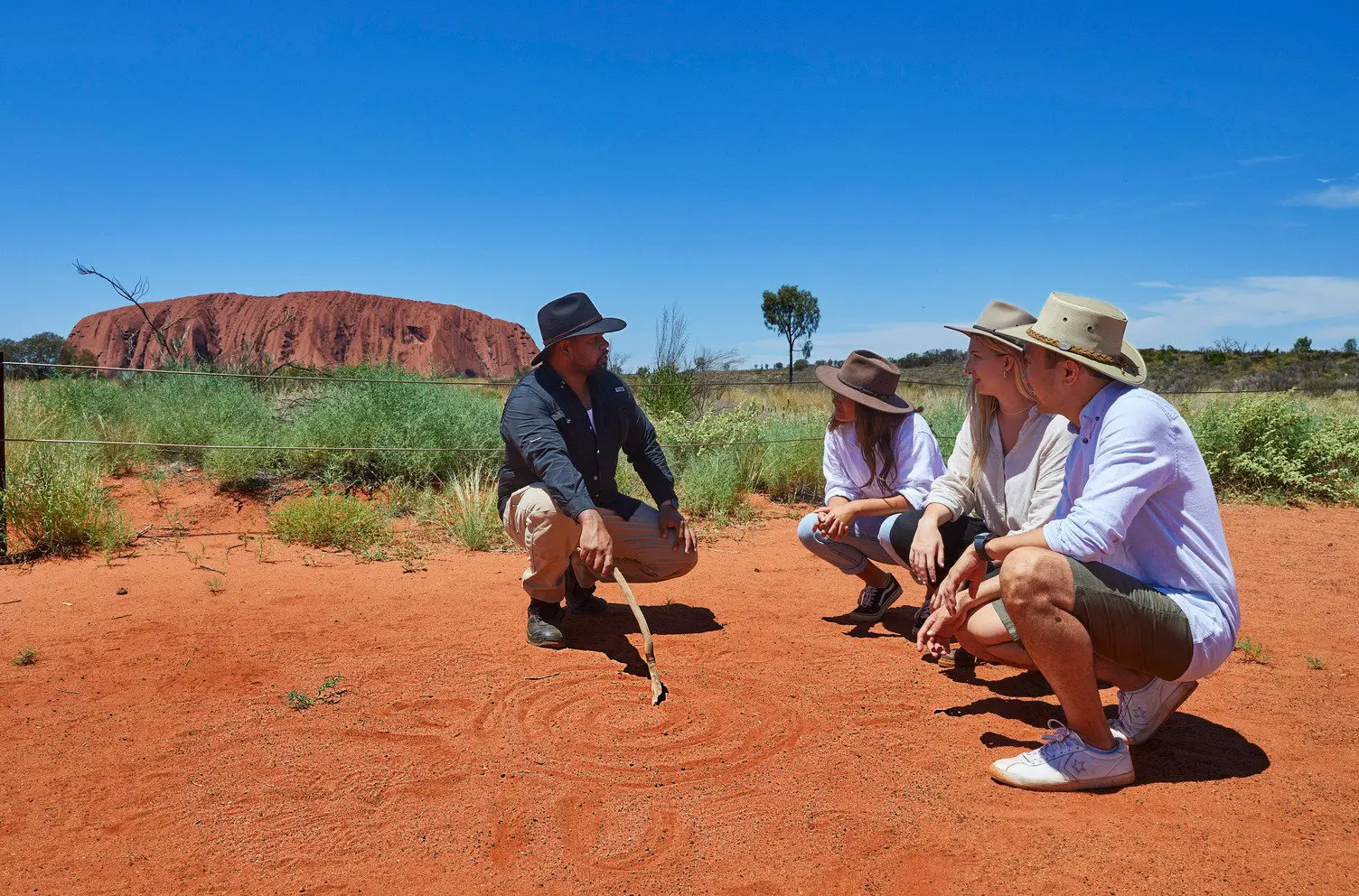The Early Days of Ayers Rock Resort
While Uluru dates back some 550 million years, the development of Ayers Rock Resort was a little more recent. In fact, tourism did not arrive around Uluru until the 1950s – before that, the area was largely uninhabited.
The 1800s
Archaeological work in Cleland Hills, north of Uluru, in 1987 suggests that Aboriginal people were living in this region at least 22,000 years ago, while work in the MacDonnell Ranges in 1994 suggests habitation in Central Australia dates back 30,000 years.
The Central Australian landscape, of which Uluru and Kata Tjuta are an important part, is believed to have been created at the beginning of time. The Anangu Aboriginal people are responsible for the protection and appropriate management of these ancestral lands. The knowledge necessary to fulfil these responsibilities has been passed down from generation to generation.
During the 1870s, William Giles and William Gosse were the first European explorers to this region. Giles was the first to reach Kata Tjuta and named it The Olgas after the then reigning Queen Olga of Wurttemburg. Gosse, however, was the first to reach Uluru and named it Ayers Rock after his superior, Sir Henry Ayers, the Chief Secretary of South Australia.
Early 1900s
In the early 1900s the Government declared ownership of the land and by the 1950s tourists and miners had begun to make tracks to Uluru and Kata Tjuta. At the time only a few Anangu were living at Uluru. However, as tourist numbers grew, most of the Anangu there scattered into other regions within Central Australia.
In 1930, the first aeroplane landed at Uluru, piloted by journalist Errol Coote. He was a member of Harold Lasseter’s original support party when Lasseter made his unsuccessful attempt to locate a reef of gold in the south-west corner of the Northern Territory.
The 1930s also marked the carving of the first rough track from Erldunda (193 kilometres south west of Alice Springs) to Uluru by pastoralist Sid Stanes of Erldunda Station. The track traversed sand dune country and, after heavy rains, was badly rutted, boggy and often impassable. It was not until the early 1940s that the first graded road linked Alice Springs and Uluru.
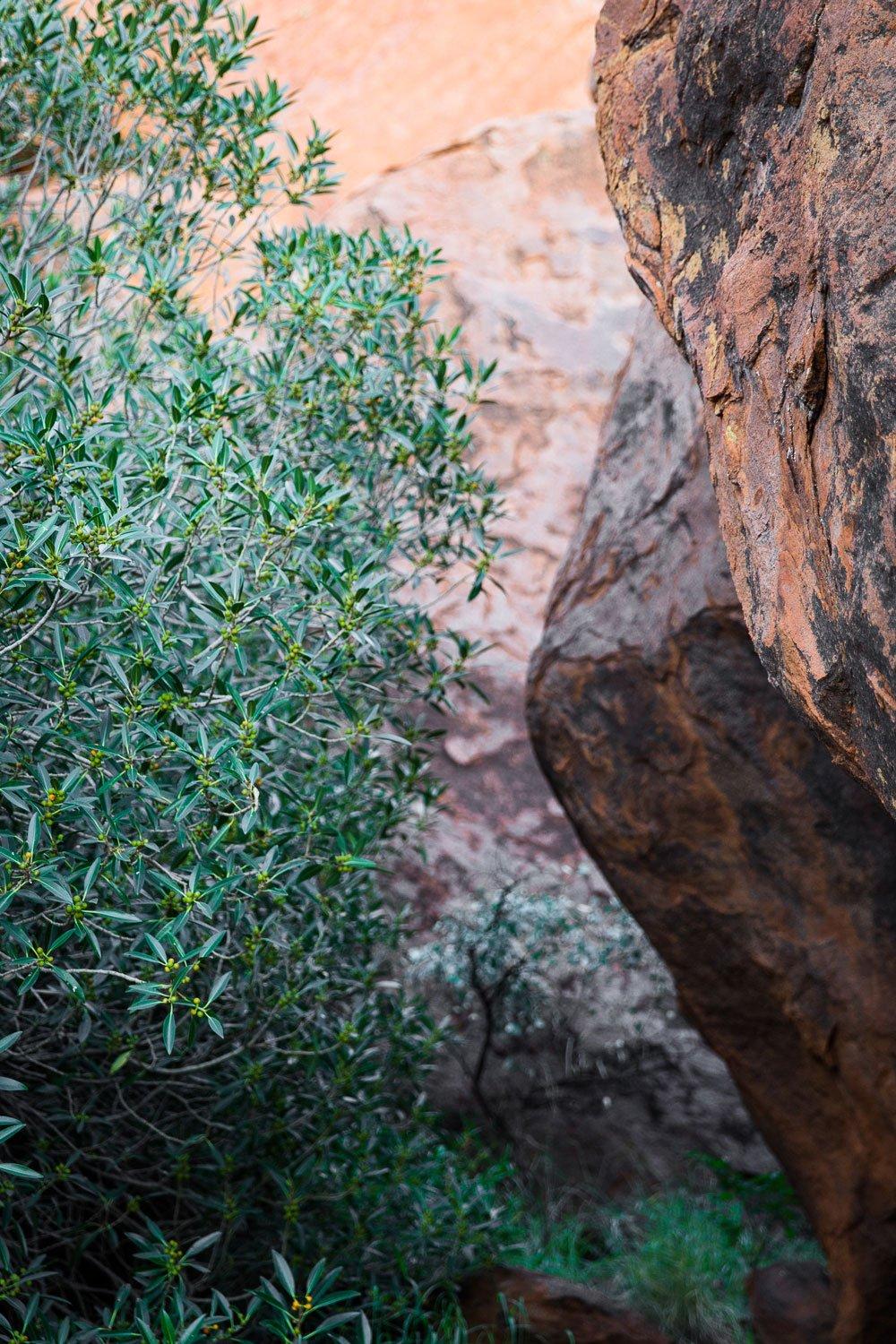
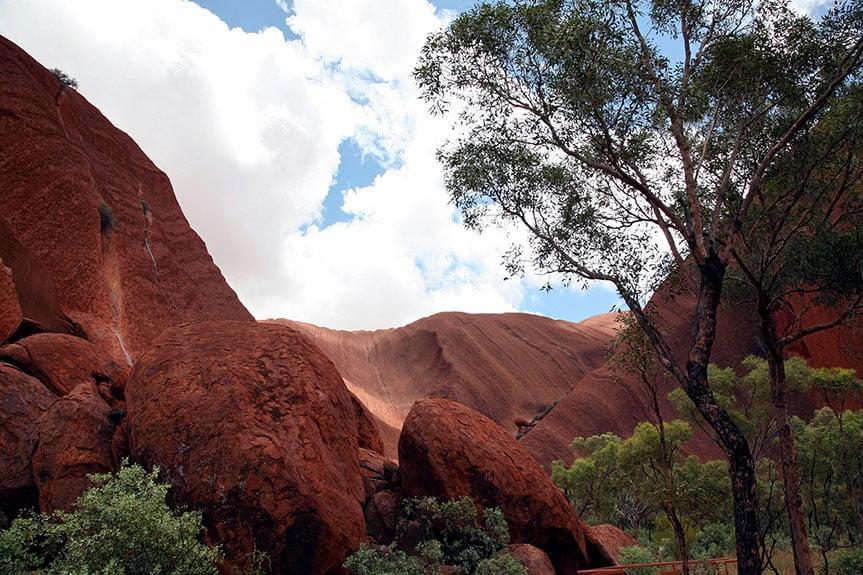
1950s
Tourism officially arrived at Uluru, when Alice Springs resident Len Tuit ran the first tours and established a base camp to the west of the Uluru climb. In 1958, visitor numbers were recorded officially for the first time. The records show that 2,296 brave souls travelled through dust and mud, for up to 12 hours, from Alice Springs to discover the world’s most famous rock. In 1959, leases were granted to two tour companies for the operation of a hotel, four motels, a store, and a service station at Uluru.
1960s - 1970s
In the 60s, improvements were made to the Alice Springs-Uluru road, making it easier for travellers to make their way – in 1968, more than 23,000 visitors arrived at Uluru. In the 1970s, it was decided that the accommodation village and airstrip should be moved outside of the park area, and the Aboriginal Land Council cleared the location for the new town site and planning for the development began.
It was not until 1979 that, in recognition of the existence of traditional Aboriginal owners of Uluru and Kata Tjuta, a national park was acknowledged. In 1983 Prime Minister Hawke announced the government's intention to grant ownership of the land back to the traditional owners. The agreement, however, required the traditional owners to lease the park to the Australian National Parks and Wildlife Service for a period of 99 years.
1980s
The Ayers Rock Campground opened in 1983. The following year, the Four Seasons Hotel and the Sheraton property now known respectively as Voyages Desert Gardens Hotel and Voyages Sails in the Desert were opened. The Resort Town Square, including the bank, became operational and the primary school was completed.
In 1985, the Commonwealth Government handed the Ayers Rock (Uluru) National Park back to its traditional Aboriginal owners, and in 1986 park management was transferred from the Conservation Commission of the Northern Territory to the Australian National Parks and Wildlife Service. In 1988, the Yulara Maisonettes – now known as Emu Walk Apartments – were officially opened, and in 1989, the new coach campground followed.
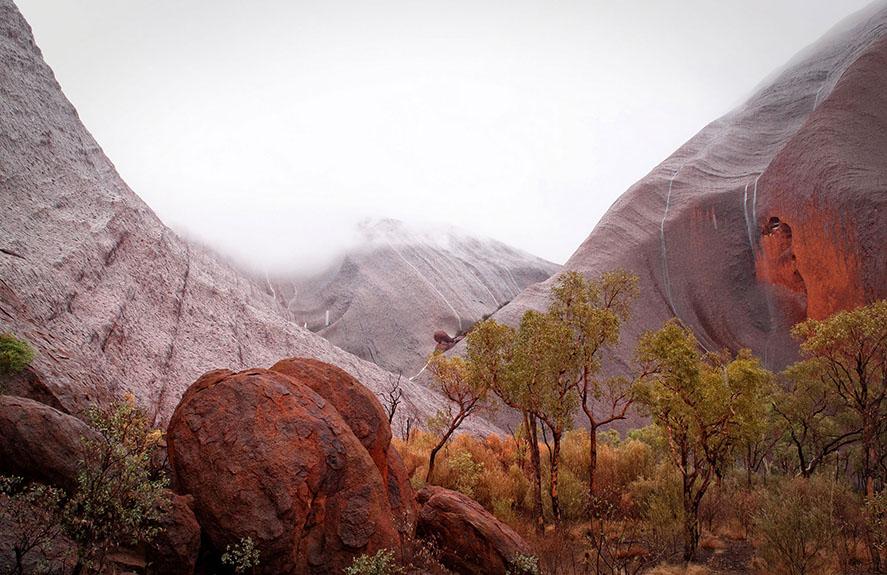
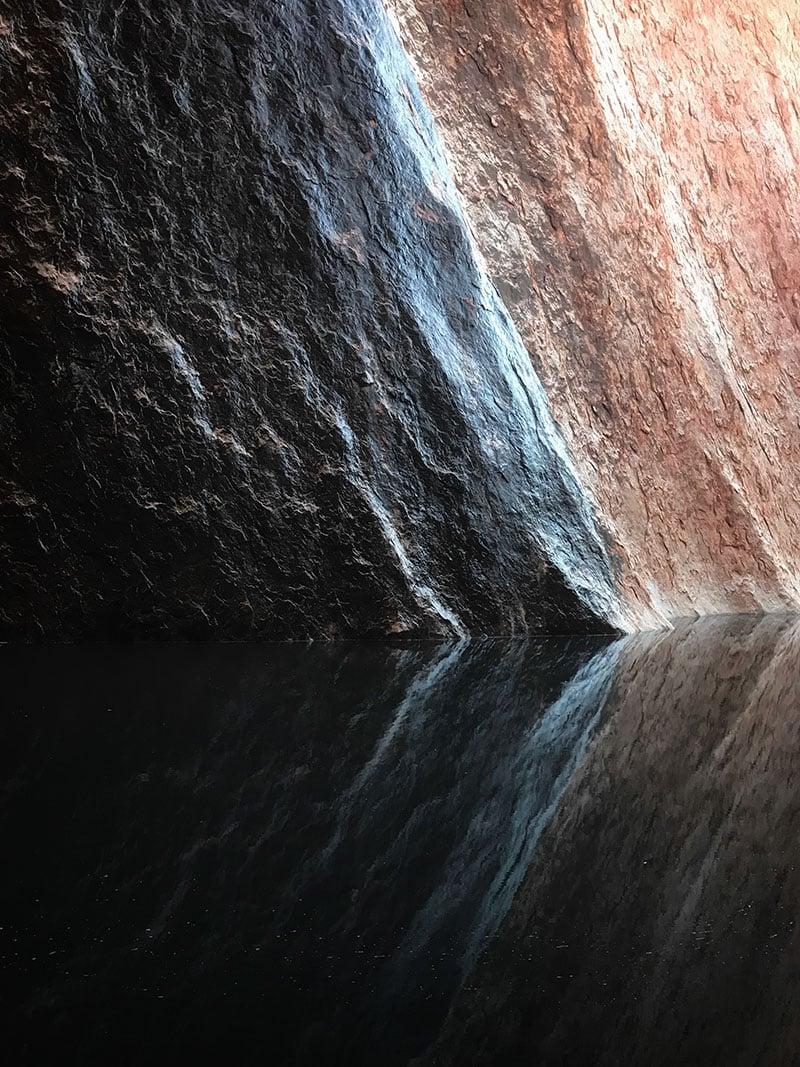
Early 1990s
Red Centre Hotel, now known as Voyages Outback Pioneer Hotel & Lodge, was opened in 1990. In July 1992, the Yulara Development Company Limited was dissolved and the Ayers Rock Resort Company Limited was constituted. The Sheraton Hotel was sold and all hotels now came under one management.
In 1994, Uluru-Kata Tjuta National Park received its dual World Heritage listing for Outstanding Natural Values and Outstanding Cultural Values. Three years later, in 1997, the decision to fully privatise the Yulara township was made, and the Ayers Rock Resort Company Limited was sold for $220 million.
2000s
With a new millennium came a new name for Ayers Rock Resort Management, and Voyages Hotels & Resort was born. In 2003, a $100 million master plan was completed, including major upgrades for Desert Gardens Hotel, Emu Walk Apartments, and Outback Pioneer Hotel & Lodge. The Lost Camel was opened and infrastructure was improved. And more visitors kept arriving: in 2006, there were 344,357 visitors recorded at Uluru-Kata Tjuta National Park.
2010s
In 2011, the Indigenous Land and Sea Corporation purchased Ayers Rock Resort and established Voyages Indigenous Tourism Australia. The following year Voyages invested $43 million to improve the resort experience, including a total refurbishment of Sails in the Desert and Uluru Meeting Place.
In 2013, in line with Voyages commitment to increase Indigenous employment, Indigenous staff numbers grew from 2 in 2010 to 204 including 60 trainees. A total of 74 trainees successfully completed their traineeship at the National Indigenous Training Academy. 2014 and 2015 were years to celebrate the 30th anniversary of Ayers Rock Resort and of Uluru being handed back to its traditional owners, respectively.
In 2016, the installation of Tjintu Solar Field was completed. The solar field produces about 15% of the Resort’s power needs – the equivalent of about 150 Australian households.
2020s
In 2021, Ayers Rock Resort opened the Gallery of Central Australia (GoCA). GoCA is an immersive celebration of Central Australian art. It is a cultural hub that educates and inspires visitors about Indigenous art through revolving exhibitions, enriching art discussions, and artist-in-residence programs.
In 2023, we re-opened the Outback Hotel & Lodge at Ayers Rock Resort following a multi-million dollar refurbishment giving travellers to this popular tourism destination increased accommodation options. Previously known as the Outback Pioneer Hotel, the new-look accommodation has been given a new name and a complete refurbishment - the first in more than 20 years - with enhanced guest rooms, new ensuite bathrooms, and a major upgrade to the swimming pool and surrounding public areas.
In May 2023, Voyages Indigenous Tourism Australia launched Wintjiri Wiru, a breathtaking cultural storytelling experience at Uluru, developed in partnership with the Anangu community. This gamechanger for the Australian tourism industry combines ancient Anangu storytelling with state-of-the-art drone, laser and light projection technology. It is the first time an experience of this magnitude has been performed on a regular basis anywhere in the world.
In August 2024, Voyages Indigenous Tourism Australia launched Sunrise Journeys and Australian Native High Tea. Sunrise Journeys invites guests to experience the serenity of Uluru at dawn, immersing them in the beauty of the desert landscape while sharing the rich stories and traditions of Anangu, the Traditional Owners of the land. Australian Native High Tea offers a unique culinary experience, featuring locally sourced ingredients and Indigenous-inspired flavours, providing a perfect blend of culture and cuisine in the heart of the Red Centre.
2024 was also Ayers Rock Resort's 40th birthday, a milestone celebration of four decades of welcoming guests to the heart of Australia and showcasing the rich culture, heritage, and natural beauty of Uluru. The anniversary highlighted the resort’s journey, the contributions of its dedicated team, and its ongoing commitment to sharing and preserving the stories of Anangu.
